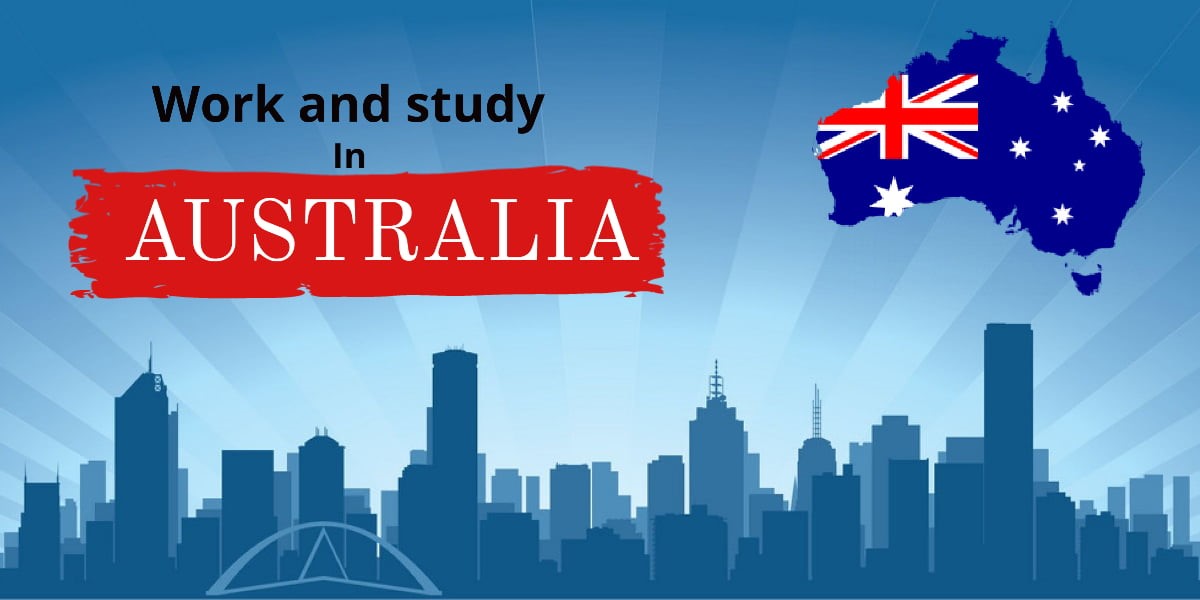Have you ever wondered if you could work while studying abroad in Australia? We can help. We explain how your student visa works, what you can do, and what options you have.
Working part-time is an opportunity for many overseas students in Australia to supplement their income, become involved in the community, and meet new people. You may have the opportunity to experience local culture or gain essential experience.
What's vital to know is whether you're eligible to work while studying and what kind of work you can undertake. We discuss the working rights of international students on visas in Australia, including the various possibilities and criteria.
Work and study visa Australia: Can I work in Australia as a student?
The quick response is, "Yes." However, certain regulations and constraints limit what you may do and the number of hours you can work. If you hold a student visa, you can work in Australia. If you are accepted to study at an Australian university, you will be issued a student visa (subclass 500). This visa allows you to do the following:
- Work up to 48 hours every fortnight.
- During the semester break, there are no hour limitations.
The working hours limit is meant to protect you by requiring that you dedicate the majority of your time to completing your degree. What matters most is that your work has no detrimental impact on your academic performance. While working, you need to:
- Maintain your course enrollment.
- Maintain appropriate and consistent course attendance.
- Make essential course advancements.
Remember that you can only start working following your academic program's official start date. To continue working part-time, you must have satisfactory academic standing.
Work and study in Australia requirements
International students find Australia to be an attractive location, but to be admitted to an Australian university or college, they must complete specific entry requirements. This involves meeting standards in areas such as:
- English Proficiency
- Academic Qualifications
- Visa Requirements
- Course-Specific Requirements
- Application Process
- Financial Capacity
- Health Insurance
Australia work visa
There are various sorts of Australian work visas available; however, the most prevalent ones include the following:
- Global Talent Visa, subclass 858: A global talent visa has two options accessible based on your skills; for the streamlined pathway, you must submit an expression of interest. A global talent visa is permanent and allows you to stay in Australia permanently.
- Employer Nomination Scheme Visa—Subclass 186: A 186 visa is a permanent work visa that requires a sponsor. You can choose one of the following streams for an 186 visa:
- A direct entry stream.
- A labor agreement stream.
- A temporary residence transition stream.
- Permanent Skilled Regional Visa-subclass 191: Visa 191 will be open on November 16, 2022. This is likewise a permanent work visa, but you must have previously held a valid visa to apply for subclass 191.
- Regional Sponsored Migration Visa Subclass 187: You can apply for an 187 visa if you have previously held a valid work visa and worked with the same business.
- Skilled Employer Sponsored Regional Visa, subclass 494: A 494 visa allows you to work in particular locations where your sponsoring employer has nominated you. This is a temporary visa that is valid for five years; if you are eligible, you can apply for permanent residency after three years.
- Skilled Independent Visa, subclass 189: Visa 189 is a points-based visa, which requires at least 65 points from the skills table. If you are granted an 189 visa, you may stay in Australia indefinitely.
- Skilled Nominated Visa—Subclass 190: Visa 190 is a permanent work visa that can be obtained only if you are invited to apply. If you fulfill the points eligibility criteria, you will be sent an invitation.
- Skilled Recognized Graduate Visa, subclass 476: Visa 476 is awarded to fresh graduates in Australia who have exceptional skills in their field of study. However, this visa is only valid for 18 months.
- Skilled Regional Visa, subclass 887: Visa 887 is a permanent visa you can apply for if you previously received a short-term work visa.
- Skilled Regional (Provisional) Visa-subclass 489: You can apply for a 489 visa if you have previously held a skilled regional visa. Visa 489 is similarly temporary; however, you can apply for a permanent visa after several years.
- Skilled Work Regional Visa, subclass 491: A 491 visa is exclusively awarded to highly skilled and qualified individuals. You must meet the points requirements for a 491 visa and submit an expression of interest. After three years on the 491 visa, you can seek permanent residency.
- Temporary Work International Relations Visa, subclass 403: This visa comprises six streams, each with its own needs and standards. You can apply for this visa if you meet the eligibility requirements for that particular stream.
- Temporary Work Visa for Short Stay Specialists (subclass 400): You can apply for this visa if you have a particular talent that is in short supply in Australia. This visa is typically valid for three months, although in some situations it can be extended to six months.
- Temporary Skill Shortage Visa, subclass 482: A visa 482 is available in three streams, which you can apply for according to which one best suits you. To obtain this visa, you must be nominated and sponsored by your company. This is a temporary visa; however, you can seek permanent residency after a few years.
Conclusion
As a student, getting a job as you study in Australia can appear difficult at first. However, taking a few basic steps can help make the process more bearable. Always check and understand your visa rules before looking.
